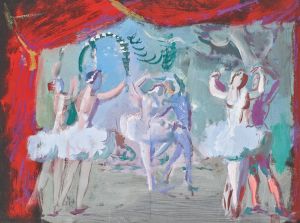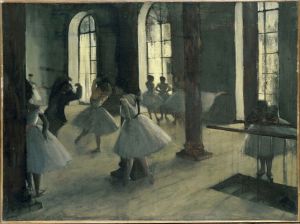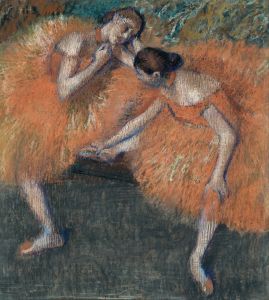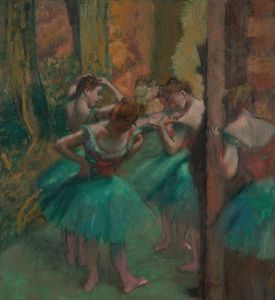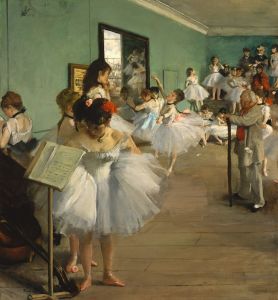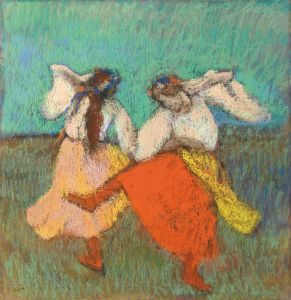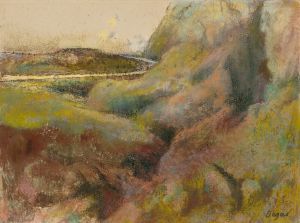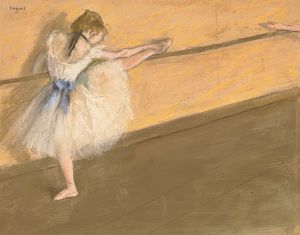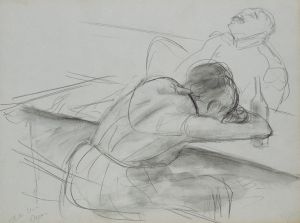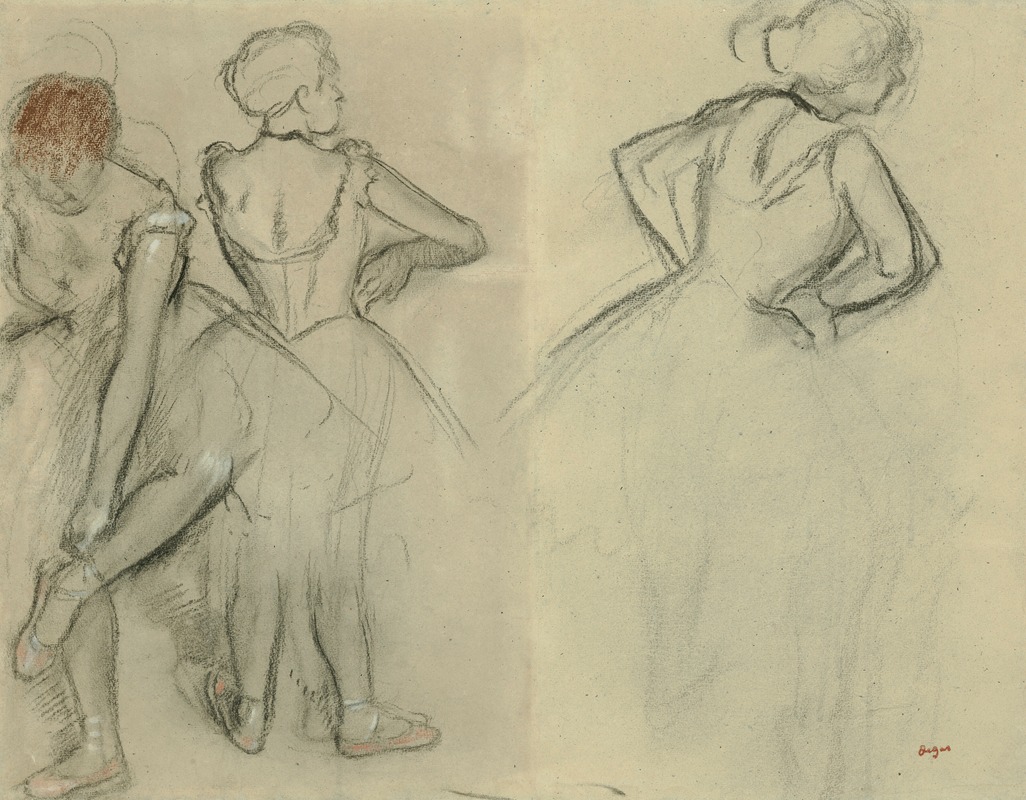
Etude de danseuses
A hand-painted replica of Edgar Degas’s masterpiece Etude de danseuses, meticulously crafted by professional artists to capture the true essence of the original. Each piece is created with museum-quality canvas and rare mineral pigments, carefully painted by experienced artists with delicate brushstrokes and rich, layered colors to perfectly recreate the texture of the original artwork. Unlike machine-printed reproductions, this hand-painted version brings the painting to life, infused with the artist’s emotions and skill in every stroke. Whether for personal collection or home decoration, it instantly elevates the artistic atmosphere of any space.
"Etude de danseuses" is a notable work by the French artist Edgar Degas, who is renowned for his depictions of dancers, particularly ballet dancers, which became a central theme in his oeuvre. Degas, born on July 19, 1834, in Paris, France, was a prominent figure in the Impressionist movement, although he preferred to be called a realist or independent. His works are celebrated for their innovative composition, perspective, and portrayal of movement.
"Etude de danseuses," which translates to "Study of Dancers," is a testament to Degas's fascination with the world of ballet. Throughout his career, Degas produced numerous paintings, pastels, and sculptures that captured the grace and discipline of ballet dancers. His works often depicted dancers in rehearsal or backstage, offering a glimpse into the less glamorous, yet intensely dedicated, side of the ballet world.
Degas's approach to depicting dancers was both observational and intimate. He spent countless hours at the Paris Opéra, sketching and studying the dancers as they practiced and performed. This dedication to capturing the essence of movement and the subtleties of the dancers' gestures is evident in "Etude de danseuses." The piece reflects Degas's keen interest in the human form and his ability to convey the physicality and emotion of his subjects.
The composition of "Etude de danseuses" is characteristic of Degas's style, which often includes unusual angles and perspectives. He frequently employed techniques such as cropping and asymmetrical balance, which were influenced by his interest in photography and Japanese prints. These elements can be seen in the way Degas frames his subjects, creating a sense of immediacy and capturing a moment in time.
Degas's use of color and light in his depictions of dancers is also noteworthy. He often utilized a muted palette, with soft pastels and delicate brushwork, to convey the ethereal quality of the dancers' movements. This approach allowed him to highlight the contrast between the dancers' delicate costumes and the more subdued backgrounds, drawing the viewer's attention to the figures themselves.
"Etude de danseuses" is not just a study of physical movement but also an exploration of the dancers' inner world. Degas was interested in the psychological aspects of his subjects, and his works often convey a sense of introspection and contemplation. This depth adds a layer of complexity to his portrayals, inviting viewers to consider the discipline and dedication required of ballet dancers.
Degas's influence on the art world extends beyond his lifetime. His innovative techniques and unique perspective have inspired countless artists and continue to be studied and admired today. "Etude de danseuses" is a prime example of his ability to capture the beauty and intricacy of the human form, making it a significant piece in the study of both Degas's work and the broader Impressionist movement.
In summary, "Etude de danseuses" by Edgar Degas exemplifies the artist's mastery in depicting the world of ballet with sensitivity and insight. Through his innovative use of composition, color, and perspective, Degas offers a timeless exploration of movement and emotion, solidifying his legacy as one of the most important artists of the 19th century.





